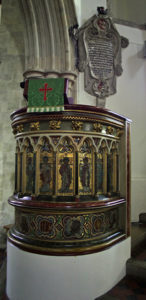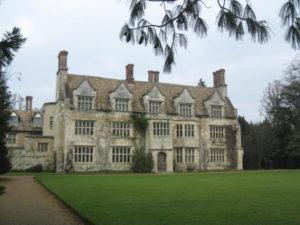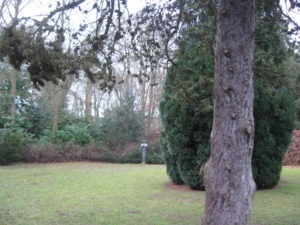The Winter Walk has made Anglesey Abbey our most visited National Trust site, but it has much more than one attraction. That said, the many different species of wonderful snowdrops are only part of the walk’s appeal.
We arrived at noon, and where do National Trust members go then? The cafe, of course: very good value it is, although you need initiative to fast-track from the prepared sandwiches to drinks and checkout instead of joining the queue waiting for hot meals. It is justly popular and we had to eat in a well-heated marquee. No one, we noticed, was at picnic tables outside.
Before the walk there’s a display of snowdrops in full variety, not easy to appreciate without the chance to compare. Once in the winter garden, though, it has to be the way all seasonal plants are grouped that captures the imagination. The green and white miniatures are set among stems of orange, green and red cornus, woven through green and black grasses or sheltered beside umbrellas of hellebores. Kaleidoscope is the only way to describe it: the blend of colours, textures and heights seems to whirl in your sight. It draws you onward by a winding path so that the next delight is hidden until the moment of surprise.
And nothing surprises, even for an habitual visitor, as much as the grove of stunning Himalayan birch. What good news it is that another 117 of these beauties is to be planted. A long memory may recall the daffodils of David Lean’s film “Doctor Zhivago;” there were some daffodils in bloom with more to come but these trees are among the finest anywhere in England.
A peak like that needs a gentle descent to follow, with a rest for the senses. There are more snowdrops under mature hazel in calm, almost twilight conditions. With eyes almost at rest the ears came into focus. Blackbird, robin and great tit were calling. A little further on Lode Mill and its stream offered a different kind of peace. The mill is open so visitors can see it in action and talk to the millers. Flour is sold there and at the Visitor Centre.
Water attracts a different kind of life; a pair of moorhen were at the quarry pond, and mallard occupied the canal. Across the water in each direction there are trees, more snowdrops and winter aconite. From here on the dominant birdsong was from thrush, high in the trees. We looked into the herbaceous border, not expecting anything but to check on work being done to eradicate invasive weeds. One section at a time is being cleared so there are hopes that part of the border will flourish by the summer.
Once away from the canal the path again winds, between yew hedges punctuated by statues and again underplanted by snowdrop, aconite and hellebore. Gradually the way leads towards the house, closed until Easter but with its exterior on display above the leafless roses. Away from formal planting there are meadows, once cut through by water but now like so many ha-has. Later in the year there will be many people walking across: today there were just two. In the distance are other woodland areas, a children’s playground and a story-telling area, and a wildlife hide we have previously used with success. We made our way back through another woodland walk, created with assistance from local schools.
Of course, as hinted at the entrance, few visitors leave without time in the shop and/or plant centre. We were no exception.
In summer we will walk for longer to enjoy the different seasonal plants as well, perhaps, as visiting the house. We may end up with tea and cake. No doubt too another session in the plant centre will be needed. Whatever, it is well worth a journey and all the time you can afford.










